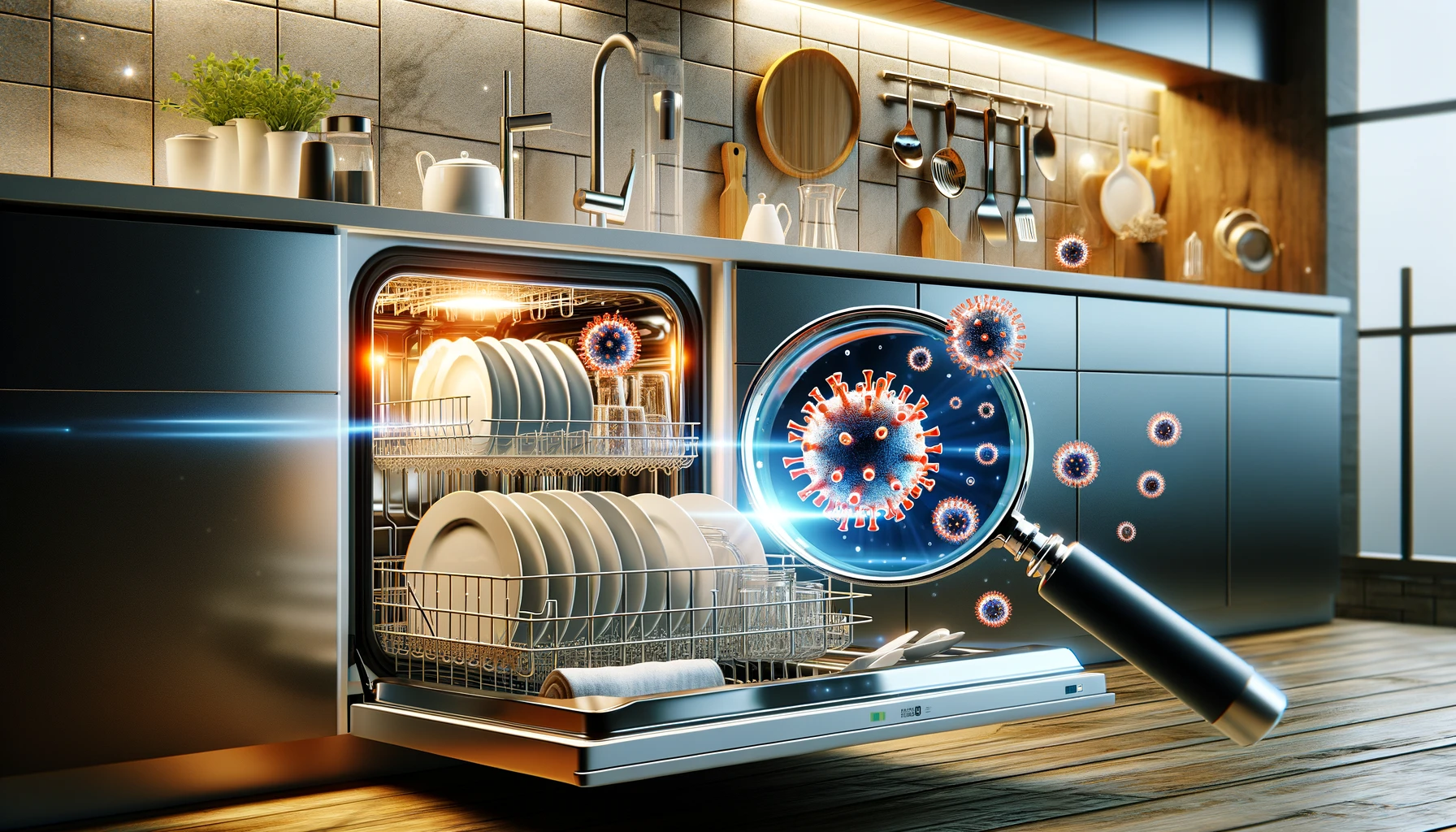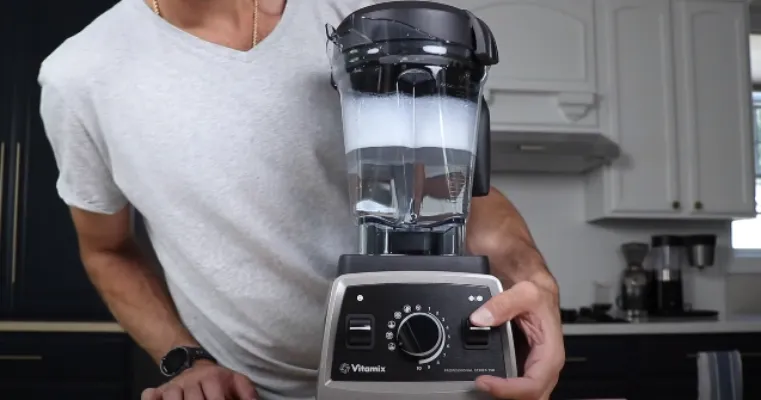In every kitchen, the dishwasher is not exactly a convenience. It’s a pivotal tool in the fight against microbes. The operating room and commercial establishments follow strict regional statutes for sterilizing processes. But, the humble home dishwasher operates under the radar. Yet, it wields significant power in sanitizing our dishes. It uses mechanical actions, hot water rinses, and sanitizing solutions to combat unseen enemies.
Can Your Dishwasher Eliminate Viruses?
Dishwashers use high heat, chemical detergents, and mechanical action. This combination effectively kills viruses, including tough ones like the Norovirus. Dishwashers reach over 65°C (149°F) and use sanitizing solutions. This ensures a 99.99% reduction of bacteria. It surpasses NSF/ANSI Standard 184 for sterilization. This makes the dishwasher an essential tool in maintaining kitchen hygiene and safety. It offers peace of mind. It uses scientifically proven methods to combat unseen microbial threats.

Dishwashing Detergents: A Chemical Battle
One cannot understate the importance of dishwashing detergent. Engineers designed these alkali-based cleaners to disrupt and solubilize the protein capsids of viruses. For example, these cleaners can target Norovirus. The cleaners make foam up, but this isn’t their main purpose. Its non-lipid-enveloped structure makes Norovirus resistant. This action renders the virus incapable of attaching to and infecting human cells. It actually neutralizes the virus’s threat.
Heat: The Unsung Hero
The heat generated during a dishwasher’s cycle plays a critical role. Most biological organisms can’t survive in the high alkalinity and heat of a dishwasher. Hot water ensures clean dishes. It also helps detergents break down food debris and grease. This provides a one-two punch against microbes.
The Sanitizing Solution
When sanitizing, not all solutions create equal results. Compounds like hypochlorite and quaternary ammonium are champions in the sanitizing field. They attack bacteria and viruses with precision. They penetrate the virus’s protein capsid. This disrupts its ability to infect.
Understanding the Mechanics
A dishwasher’s mechanical action, the spray of hot water and detergent solution, works with chemical sanitizers. This cleans and sanitizes. This process is like a quick cycle in a tiny dishwasher specifically for your dishes. The rinse and drain stages wash away all detergents, food particles, and microbes to ensure cleanliness. This leaves your dishes safe and clean.
The Role of Temperature
Temperature plays a pivotal role in sterilization. Research shows that exposure to temperatures above 65°C (149°F) for at least 5 minutes can kill most germs. Even at lower temperatures, like 45°C (110°F), the cleaning and sanitizing effects remain robust with the right dishwashing detergent. This is thanks to the chemicals in the detergents.
Also Read: The Scorching Truth About Dishwasher Drying!
Personal Experience and Expertise
I can confirm that a dishwasher with a high rinse temperature is invaluable. I draw from my own experience and wisdom of immunologists. Especially those with a hygiene cycle button. Brands like Bosch have pioneered features such as the baby’s bottle sign. It indicates cycles that elevate temperatures to 60°C (140°F) and beyond. This ensures viruses and bacteria are actually killed.
The Surfactants' Role
Surfactants in dish soap reduce surface tension. This allows water to spread and penetrate grease and dirt. This action is crucial in lifting and removing dirt from dishes. It ensures they come out not just visually clean, but sanitized at a microscopic level.
Chemical Sanitizers: A Closer Look
Beyond heat and mechanical action, chemical sanitizers play a crucial role. Dishwashers certified by organizations like the National Sanitation Foundation (NSF) have extended hot-water rinse cycles. These cycles achieve temperatures that actually sanitize dishes. They meet or exceed NSF/ANSI Standard 184, which guarantees a 99.99% reduction of bacteria.
The Importance of Water Temperature
NSF Residential standards need a dishwasher’s water temperature to reach at least 155°F (68.3°C). This activates the sanitizing feature. This extended hot-water rinse is crucial. It ensures eradication of all germs. It provides peace of mind that goes beyond simple cleanliness.
Soap vs. Detergent: Understanding the Difference
The difference between soap and dish detergent is crucial in the dishwashing process. Both designs intend to clean. Detergents contain specific antibacterial ingredients. These ingredients are more effective in destroying viruses and bacteria. These ingredients emulsify fats and proteins. This allows them to be easily washed away during the rinse cycle. This distinction is important. It highlights the effectiveness of dishwashing detergents over traditional soaps in sterilization.
The Role of High Rinse Temperatures
High rinse temperatures are not just about removing grease and food debris. They’re also about ensuring sanitization. The NSF recommends dishwashers reach a final rinse temperature of at least 82°C (180°F). This actually kills microbes. This heat, combined with chemical sanitizers, ensures that dishes are clean and sanitized. The standard rivals a commercial establishment.
Mechanical Action: More Than Just Scrubbing
The dishwasher’s mechanical action involves spraying hot water and detergent. It plays a pivotal role in dislodging food debris and microbes from surfaces. This action is much like a quick cycle in a washing machine. It actually and actually cleans dishes. It ensures that it removes even the most stubborn food particles.
The Impact of Alkaline pH
The alkaline pH of dishwashing detergents is a key factor in their effectiveness. This alkali-based environment is hostile to most biological organisms. Viruses and bacteria prefer neutral pH levels to survive. The alkaline nature helps break down protein capsids. This makes it harder for viruses to survive dishwashing.
Personal Insights on Dishwashing Efficiency
From personal experience, I’ve found that using a dishwasher with a sanitizing feature significantly reduces concerns about microbes in the kitchen. The Saniwash or hygiene cycle ensures that dishes are not just clean, but sterilized. This gives an added layer of protection. It is especially important in households with young children or immunocompromised individuals.
Surfactants: The Unsung Heroes
Surfactants play an unsung role in the effectiveness of dishwashing detergents. By reducing surface tension, they allow water to more actually penetrate. This helps it lift away dirt and grease. This chemical action is critical. It ensures that dishes are not exactly rinsed, but thoroughly cleaned.
Chemical vs. Heat Sanitization
Heat is a powerful sanitizing agent. Chemical sanitizers offer a more layer of protection. Chemicals like hypochlorite and quaternary ammonium work on a molecular level. They disrupt the protein capsids of viruses. This makes them an essential part of sanitizing.
Also Read: Dishwashers>>>
Usually Asked Questions:
Are germs killed in dishwasher?
Discover how your dishwasher becomes a formidable foe against 99.999% of germs and bacteria. It’s equipped with a sanitizing cycle reaching 150 degrees F, as per NSF/ANSI Standard 184. Ensure a cleaner, healthier kitchen.
Does dishwasher kill stomach virus?
On Wednesday, Dec. 12, 2012, Health Day News reported a significant finding. Commercial dishwashers are efficient for everyday bacteria, but they struggle to cut norovirus. Norovirus is the notorious cause of stomach flu and many foodborne illnesses globally. I have personal experience and a health research background. I can say that relying only on dishwashing to kill viruses may not fully protect against foodborne diseases. This is especially true for norovirus.
Does the dishwasher kill the flu?
In my journey to ensure a germ-free home, I’ve pondered, does the dishwasher kill the flu? Illuminatingly, flu viruses die at 167°F or higher. Modern dishwashers sanitize cycles by heating water to 170°F or more. They easily surpass this threshold. This information comes from the Centres for Disease Control and Prevention. This revelation not only quells concerns. It also highlights the unsung role of dishwashers in our health-centric routines.
How hygienic are dishwashers?
I drew from personal experience and a deep dive into the mechanics of dishwashers. It’s clear that their efficiency in eliminating viruses comes from their use of very hot water and stronger detergents. Regular dish soap does not offer the same benefits. This combination is not just about tackling food grime. It also ensures a bacterial cleanse, making them a cornerstone of kitchen hygiene.
Conclusion:
This article does not have a traditional closing section. A dishwasher’s mechanical action, chemical sanitizers, heat, and alkaline pH levels combine to form a strong defence against microbes. This multifaceted approach ensures that dishes are not exactly clean, but sanitized. It offers peace of mind in the ongoing battle against bacteria and viruses in the home kitchen.






